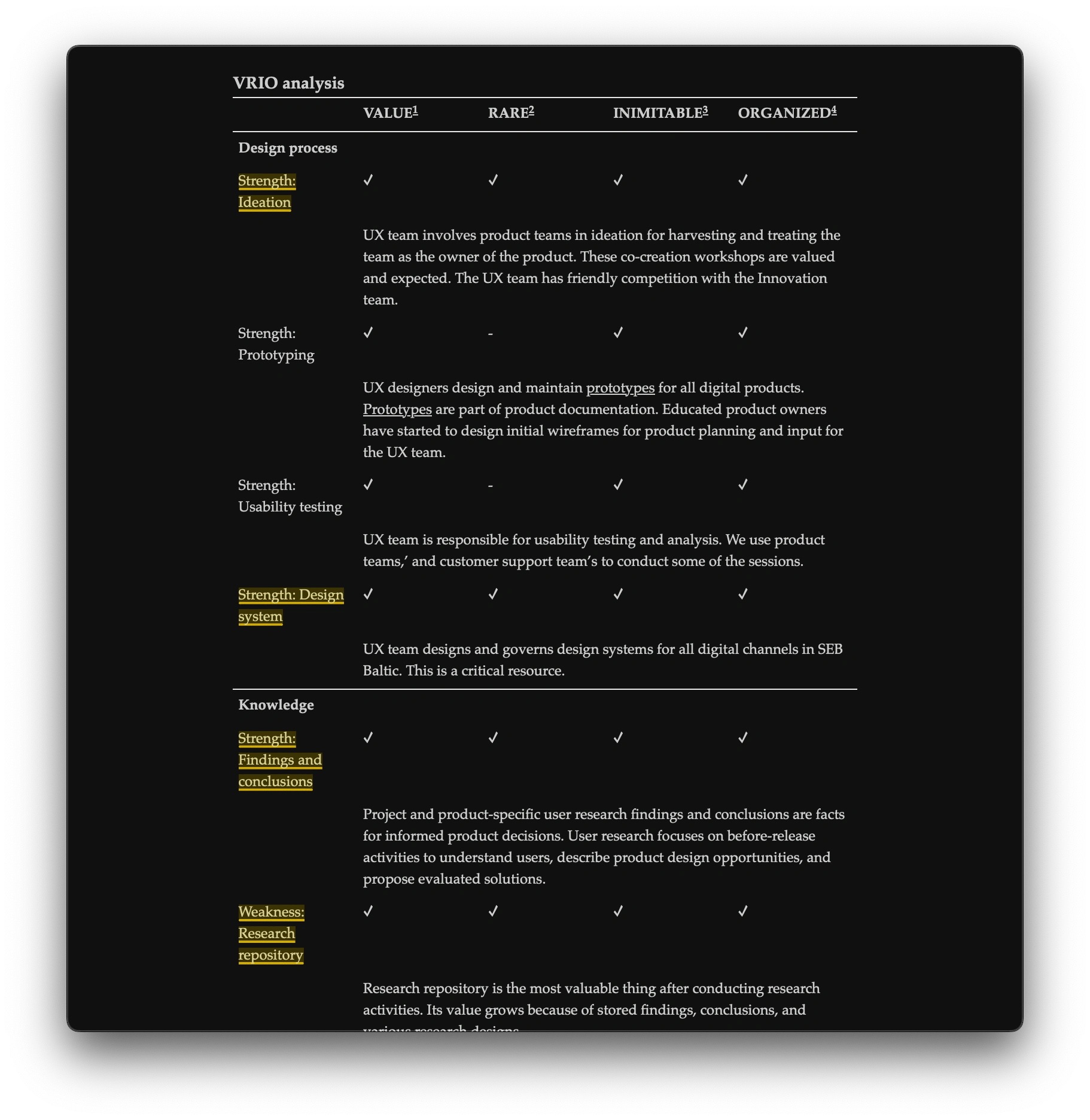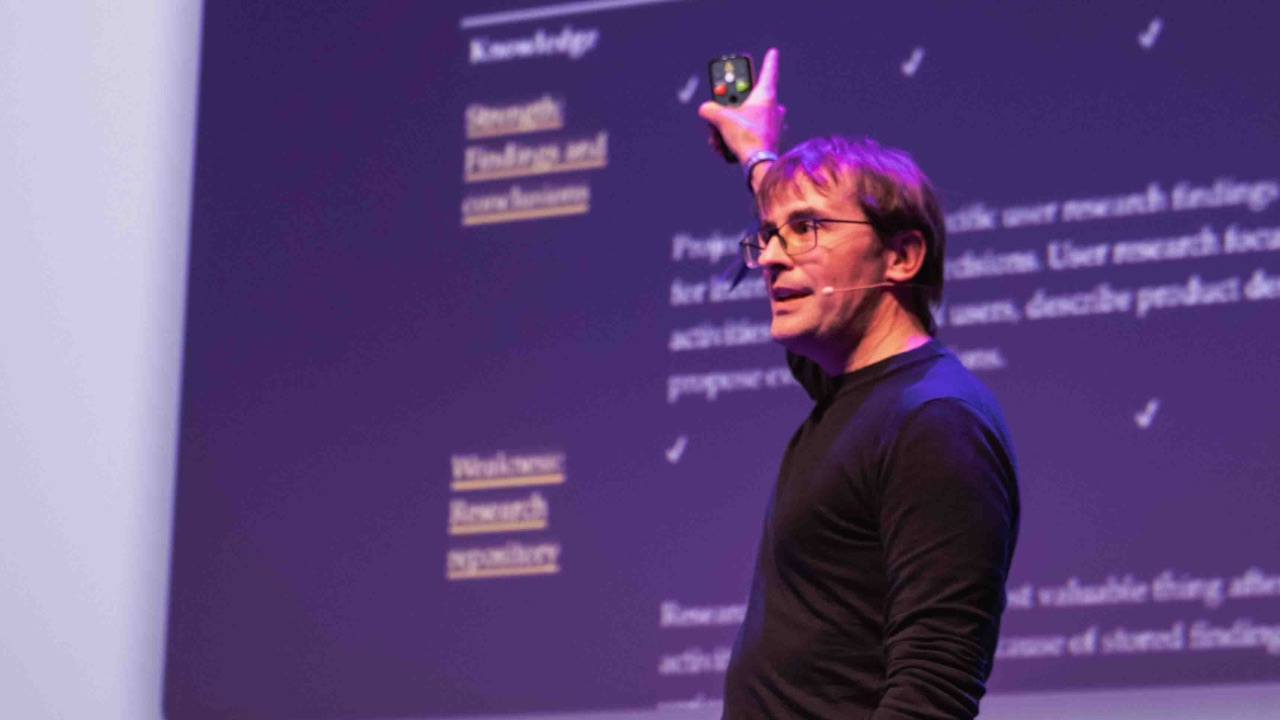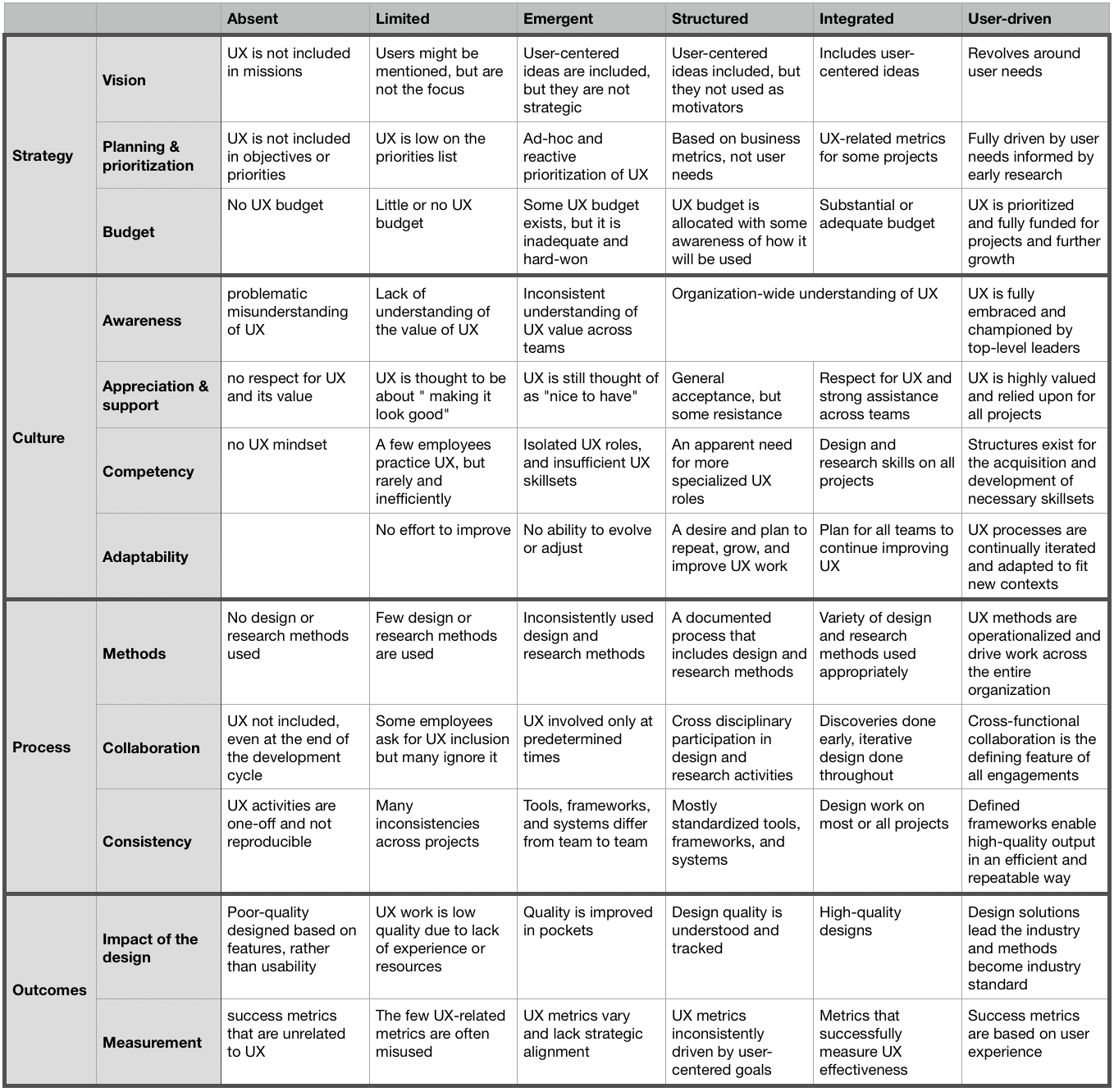Upon assuming leadership of the UX team and area within the organization, I prioritized communicating the uniqueness and value the team created in every digital product we touched. However, the responsibilities of the UX team members were not clearly defined, leading to confusion within and across the organization. One of the key points I communicated was the distinction between artists and designers—the medium may be the same, but designers create elegant, mostly visual solutions to overcome issues in product experiences. Yet, despite this, some colleagues still asked if our designers could handle small marketing-related design jobs or, even worse if a highly educated anthropologist could design a prototype.
The UX team was eager to prove our value and necessity to the organization. Based on a shared understanding of our roles, we acted helpfully and took on most tasks. This set the stage for misunderstandings of team responsibilities and ultimately limited the development of design maturity across the organization.
Yes, the UX team was a design team, but in what scope and at what point in the product development cycle? To add even more complexity for our colleagues, the design team included researchers who didn’t design at all, UX designers who focused on one aspect, and UI designers who focused on another.
VRIO
During my MBA studies, I learned about the VRIO Framework1 from a strategy and innovation lecturer and consultant, Marko Rillo2. The benefit of VRIO is that it’s an easy-to-understand concept for mapping all the resources—in our case, the team’s actions. By evaluating each resource based on specific parameters, I could assess the real value of everything the team was doing. The resources under my control were the team’s time and unique design capabilities.
- Value – Does the resource enable the organization to capture, create, and sustain business opportunities?
- Rare – Is the resource relatively scarce in the market?
- Imitability – Is the resource hard to imitate or substitute within the organization and for the competition?
- Organization – To what extent are the policies and procedures organized to support exploiting its valuable, rare, and costly-to-imitate resources?
Combining these values offers an overview of the resource’s value for the team, organization, and business.
| Value | Rare | Inimitability | Organization | Meaning |
|---|---|---|---|---|
| No | – | – | – | Competitive disadvantage – If a resource or capability is not valuable, it doesn’t matter if it’s rare, inimitable, or well-organized. It’s a weakness. |
| Yes | No | – | – | Competitive parity – If a resource is valuable but not rare, it provides competitive parity. It’s necessary but not sufficient for competitive advantage. |
| Yes | Yes | No | – | Temporary competitive advantage – If a resource is valuable and rare but easily imitable, it can provide a temporary advantage until competitors catch up. |
| Yes | Yes | Yes | No | Potential sustained competitive advantage – If a resource is valuable, rare, and hard to imitate, but the organization isn’t set up to capture its value, the potential for sustained advantage isn’t fully realized. |
| Yes | Yes | Yes | Yes | Sustained competitive advantage – When a resource or capability meets all four VRIO criteria, it can provide a sustained competitive advantage. |
In my case, I needed to clarify the unique value that only the UX team could create in the organization. I also needed a basis for focusing on the following actions to exploit opportunities for long-term gains and start capturing the full extent of value from the team’s work. All of this, in combination, had to inform our decisions and activities to cultivate a mature design culture within the organization.
Exercise
I listed all the resources, activities, and tasks the design team handled. Task management, one-on-one conversations, and chat logs provided plenty of insights.
In the next step, I evaluated each subjectively in a table for each parameter and added notes and explanations.

Immediately, I noticed patterns of wasteful tasks that could be eliminated completely. For example, I observed that offering design as a service in workshops run by other departments often led to outcomes that were not used in subsequent product development cycles—a clear waste of qualification and time.
There is also a potential waste of resources if not captured in stated procedures. At the time of the analysis, we had considered establishing a design system, but the focus had been on other matters. Now, as we needed to mature our practices and focus on long-term value creation, the design system became a critical resource to prioritize.
Outcomes
Analyzing with the VRIO framework was a watershed moment. This was the step where I exclusively focused on the value we provided to the organization and business, the very reason the design team had been established and maintained. The understanding and insights gained brought reality and decisiveness to my actions. I had already transitioned from a design career to leading the design team and steering the design area strategy for the benefit of the business.
- We established the Design System, a unique combination of usability, aesthetics, and technology, to capture the maximum value of design work and ensure long-term benefits for the product development organization and our customers.
- We transitioned from the “fantasy world” of vague product development options to planned and budgeted outcomes by strategically refocusing and streamlining design processes.
- Eliminated bottlenecks by better understanding roles and responsibilities, defining user researcher, UX designer, and UI designer roles, and establishing standards and guidelines.
- Freed significant time and attention for high-value work by setting clear expectations for projects where the design team’s work could create business value.
- Implemented a knowledge management system to store research data, methodologies, and decisions. The system enables further development and experience sharing between colleagues and potential cross-referencing for innovation.
- Clear communication, a design system, and the knowledge management system significantly boosted the design team’s and the organization’s maturity in design. Teams and stakeholders now discuss customer journeys and needs rather than just screens and user interfaces. This improvement in design maturity aligns with our identified key catalysts for UX maturity, where clear processes and increased awareness played crucial roles in organizational transformation.
- We collected research insights and built customer understanding integral to product decision-making.
- Finally, we recognized the need to restructure the team and working methods, though it was just a signal at the time.
The outcomes demonstrate how the VRIO framework helped us identify and leverage the UX team’s uniqueness in the product organization. By focusing on our core competencies and communicating our value, we’ve improved appreciation for the UX team’s efforts and elevated the role of UX design within the broader organization.
Advance your career and leadership
Subscribe and get actionable insights sent to your inbox.
- Practical frameworks from years of experience
- Case studies and implementation guides
- Career development strategies for professionals
I respect your privacy. I will never share your email, and you can unsubscribe anytime.
The measurable improvements in project delivery, the increased demand for our research insights, and the growing design maturity across the organization all highlight the significance of our VRIO-inspired strategy.
“VRIO,” Wikipedia, accessed October 25, 2024, https://en.wikipedia.org/wiki/VRIO. ↩︎
Marko Rillo, https://markorillo.com ↩︎




